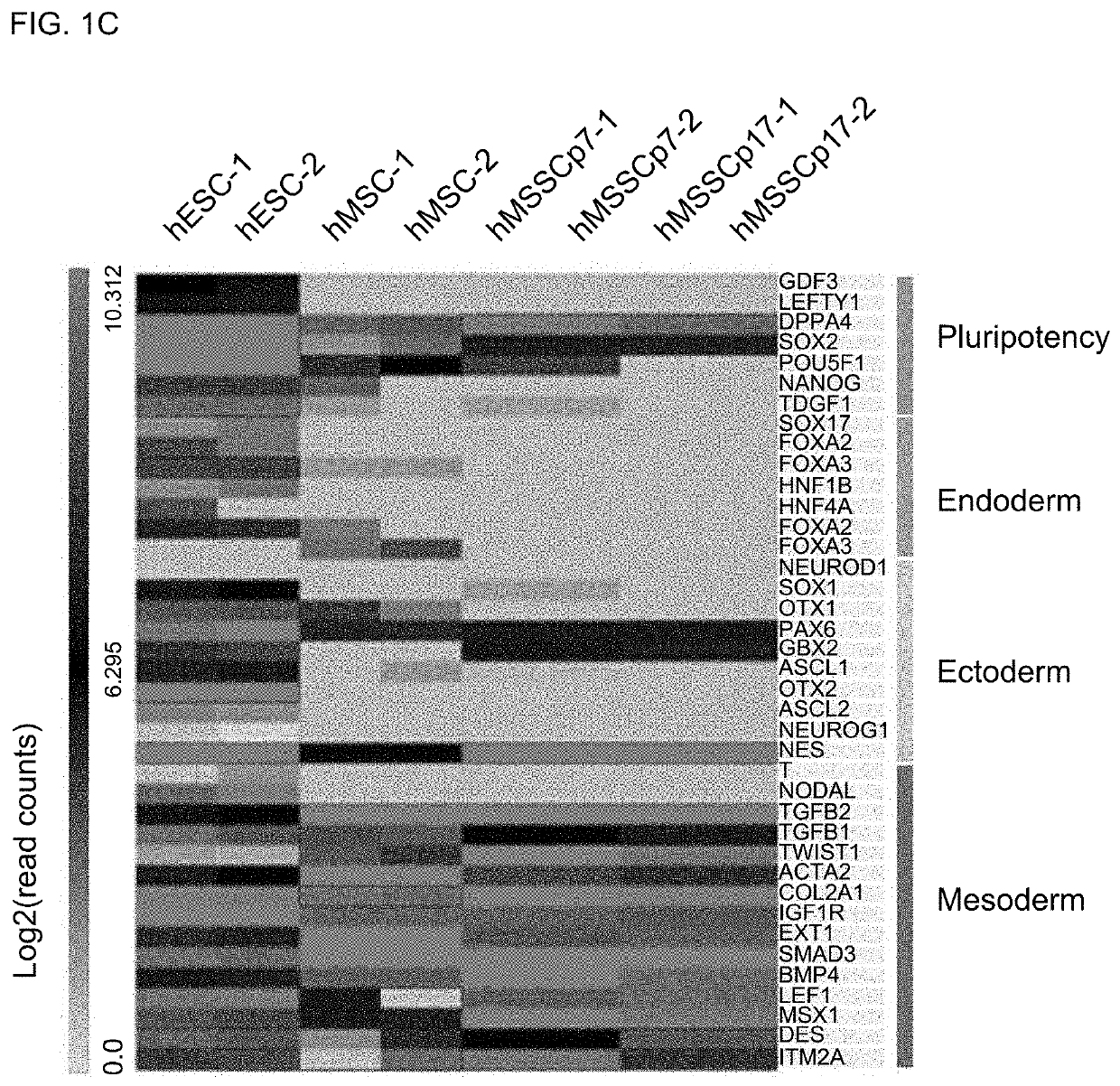Musculoskeletal stem cell
a technology of muscle and stem cells, applied in the field of muscle and muscle stem cells, can solve the problems of aging-related degeneration of muscle, bone and joint functions, difficult to achieve sufficient mscs for therapeutic application, and mesenchymal stem cells cannot directly differentiate into these tissues in the body, so as to achieve the effect of differentiation into bone, cartilage, a tendon or muscl
- Summary
- Abstract
- Description
- Claims
- Application Information
AI Technical Summary
Benefits of technology
Problems solved by technology
Method used
Image
Examples
example 1
Experimental Animals
[0099]7- to 10-week-old Balb / c-nude background mice (weighing 20-24 g) were purchased from Orient Bio (Seongnam, Korea). All animal experiments were performed according to the guidelines of the Chonbuk University Animal Care and Use Committee. The animals were accommodated under controlled-temperature (21-24° C.) and 12:12-hr light-darky cycle environments and were given free access to water and feed.
example 2.1
Induction of Differentiation from hESC into hMSSC
[0100]H9 hESCs (human embryonic stem cells) were purchased from WiCell (Madison, Mich., USA). The hESCs were cultured on CF1 mouse embryonic fibroblast (MEF) feeder cells whose cell division was blocked by mitomycin C treatment. A hESC culture medium was prepared as DMEM / F12 (Invitrogen, USA) supplemented with 20% knockout serum replacement (KSR; Invitrogen, USA), 1 mM glutamine (Invitrogen, USA), 1% nonessential amino acids (Invitrogen, USA), 0.1 mM β-mercaptoethanol (Invitrogen, USA), 0.1% penicillin / streptomycin (Invitrogen, USA) and 15 ng / mL bFGF (R&D Systems, USA).
[0101]The hESCs were induced to differentiate into hMSSCs (human musculoskeletal stem cells) using a medium for inducing differentiation into MSSC (hereinafter, referred to as “MSSC medium”) of the following composition:
[0102]1) 250 ng / mL human noggin (KOMA Biotech, Korea),
[0103]2) 20 ng / mL human LIF (KOMA Biotech, Korea),
[0104]3) 15 ng / mL basic fibroblast growth factor...
example 2.2
Induction of Differentiation from hiPSC into hMSSC
[0110]hiPSCs (human induced pluripotent stem cells) were obtained by introducing the OCT4, KLF4, SOX2 and cMYC genes to BJ fibroblasts (ATCC®CRL2522™) using Sendai virus according to the method developed by Hasegawa et al. (Fusaki et al., 2009, PNAS 85, 348-362). The hiPSCs were cultured on CF1 mouse embryonic fibroblast (MEF) feeder cells whose cell division was blocked by mitomycin C treatment. A hiPSC culture medium was prepared as DMEM / F12 (Invitrogen, USA) supplemented with 20% knockout serum replacement (KSR; Invitrogen, USA), 1 mM glutamine (Invitrogen, USA), 1% nonessential amino acids (Invitrogen, USA), 0.1 mM β-mercaptoethanol (Invitrogen, USA), 0.1% penicillin / streptomycin (Invitrogen, USA) and 15 ng / mL bFGF (R&D Systems, USA).
[0111]The hESCs were induced to differentiate into hMSSCs (human musculoskeletal stem cells) using a medium for inducing differentiation into MSSC (hereinafter, referred to as “MSSC medium”) of the f...
PUM
| Property | Measurement | Unit |
|---|---|---|
| temperature | aaaaa | aaaaa |
| thickness | aaaaa | aaaaa |
| pH | aaaaa | aaaaa |
Abstract
Description
Claims
Application Information
 Login to View More
Login to View More - R&D
- Intellectual Property
- Life Sciences
- Materials
- Tech Scout
- Unparalleled Data Quality
- Higher Quality Content
- 60% Fewer Hallucinations
Browse by: Latest US Patents, China's latest patents, Technical Efficacy Thesaurus, Application Domain, Technology Topic, Popular Technical Reports.
© 2025 PatSnap. All rights reserved.Legal|Privacy policy|Modern Slavery Act Transparency Statement|Sitemap|About US| Contact US: help@patsnap.com



